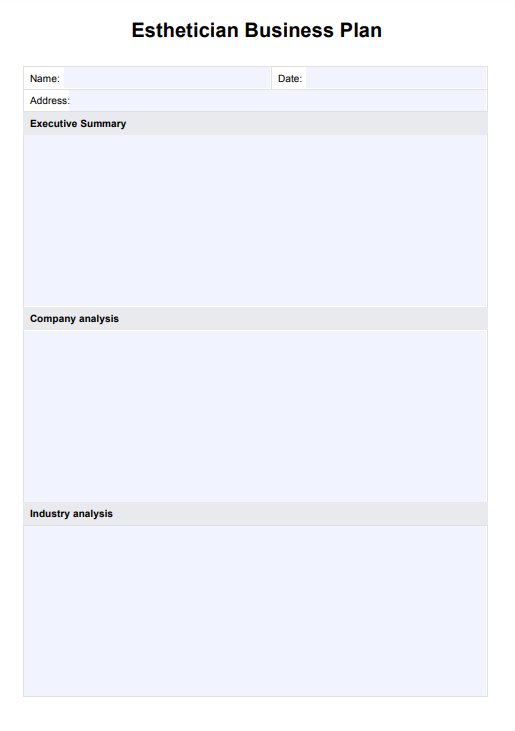Esthetician Business Plans should be updated annually or whenever significant changes in the business environment, such as shifts in market trends or expansion plans.

Esthetician Business Plan
Crafting an Esthetician Business Plan is crucial for success. Download Carepatron's free PDF to guide you in creating your own professional business plan.
Esthetician Business Plan Template
Commonly asked questions
To write a business plan for an esthetician, start by outlining your goals, defining your target market, detailing your services and pricing, conducting market research, and developing strategies for marketing and operations.
Estheticians can maximize earnings by offering high-demand services such as facials, chemical peels, and specialized treatments tailored to clients' needs. Additionally, retailing skincare products and implementing effective marketing strategies can boost revenue.
EHR and practice management software
Get started for free
*No credit card required
Free
$0/usd
Unlimited clients
Telehealth
1GB of storage
Client portal text
Automated billing and online payments











